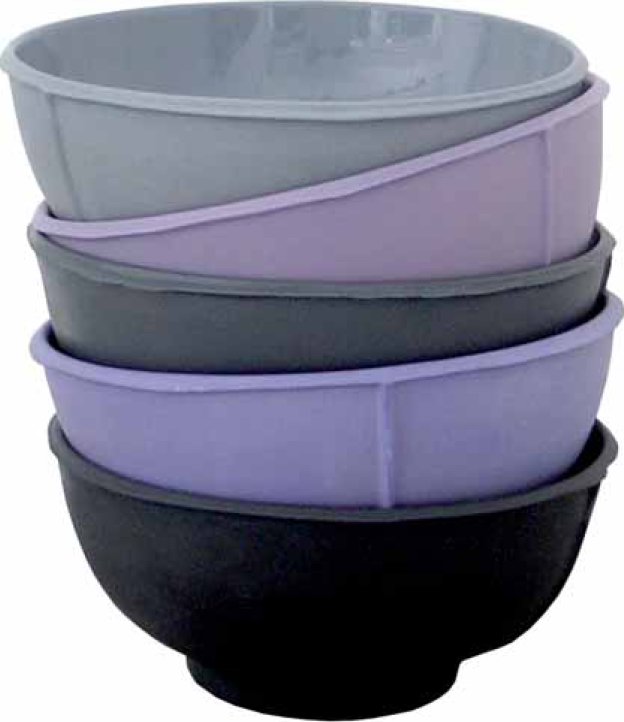Porcelain is a well-bred material: capable of being fine and delicate and with a history that dates back to 600CE China. Its provenance is the reason it is often referred to as china or chinaware. It was not until the invention of bone china in England in the eighteenth century that it had any competition as a fine, hard, ghostly translucent white ceramic.
Porcelain is not just suitable for fine dinner services; its combined properties of hardness and good electrical insulation also make it ideal for more rugged applications. As a material for electrical insulation, porcelain has been used for spark plugs, lighting and power cable insulation; its use in these products went hand-in-hand with the discovery of electricity.
Electrical insulators for power cables and railways came to prominence because of the need to move electricity from one place to another. The multitudes of porcelain insulators that exist around the world come in an assortment of shapes and colours. These different shapes reflect the different power requirements for where they were to be placed. They also needed to be designed to accommodate varying degrees of insulation; others were designed to hold the line wire more efficiently. Some manufacturers even went as far as to patent their shapes.
Image: Rice bowls by Alexa Lixfield

Key features
•High strength means thin cross-sections
•Excellent hardness
•Scratch resistant
•Vitreous, making it water resistant
•Translucent
•Excellent electrical resistance
•Excellent chemical resistance
•Non-porous
Sources
Widely available in various parts of the world, but France and the UK are the largest producers of porcelain.
Cost
Porcelain is about half the cost of bone china, but more expensive than earthenware, stoneware and terracotta.
Sustainability issues
As an inert material, ceramics do not degrade. In order to produce ceramics an irreversible chemical reaction needs to take place, therefore, unlike thermoplastics, which can be reheated and reused, ceramics are not recyclable in the sense that they cannot be re-moulded. However, they can be crushed and used as fillers and gravel for various industrial applications. The main issue with ceramics is the intense heat that is used during firing, and often, when a ceramic needs glazing, this will involve a second firing process.
Production
As with bone china (see page 202), the strength of the material means it can be formed into thin, crisp wall sections, which are suited to slip casting. Traditional methods of ceramic production also apply, such as turning, extrusion, jigger jollying and compression moulding. Railway insulators are still made by hand-turning the porcelain on a lathe.
Porcelain is used in a range of products, including dental brackets and crowns, electrical insulators, tableware and decorative figurines. High-tension porcelain is used mainly for applications where high voltage is present but it is also used for the production of pestles and mortars. Porcelain enamel is used as a protective and decorative coating that is applied to high temperature metals. It is, of course, also used for porcelain tiles for interiors and exteriors.
Derivatives
High-tension porcelain.
| + | – |
|
–Very strong and hard –Excellent electrical and chemical resistance –Versatile processing –Can be formed into thin sections |
–Not recyclable –Energy intensive to produce |
